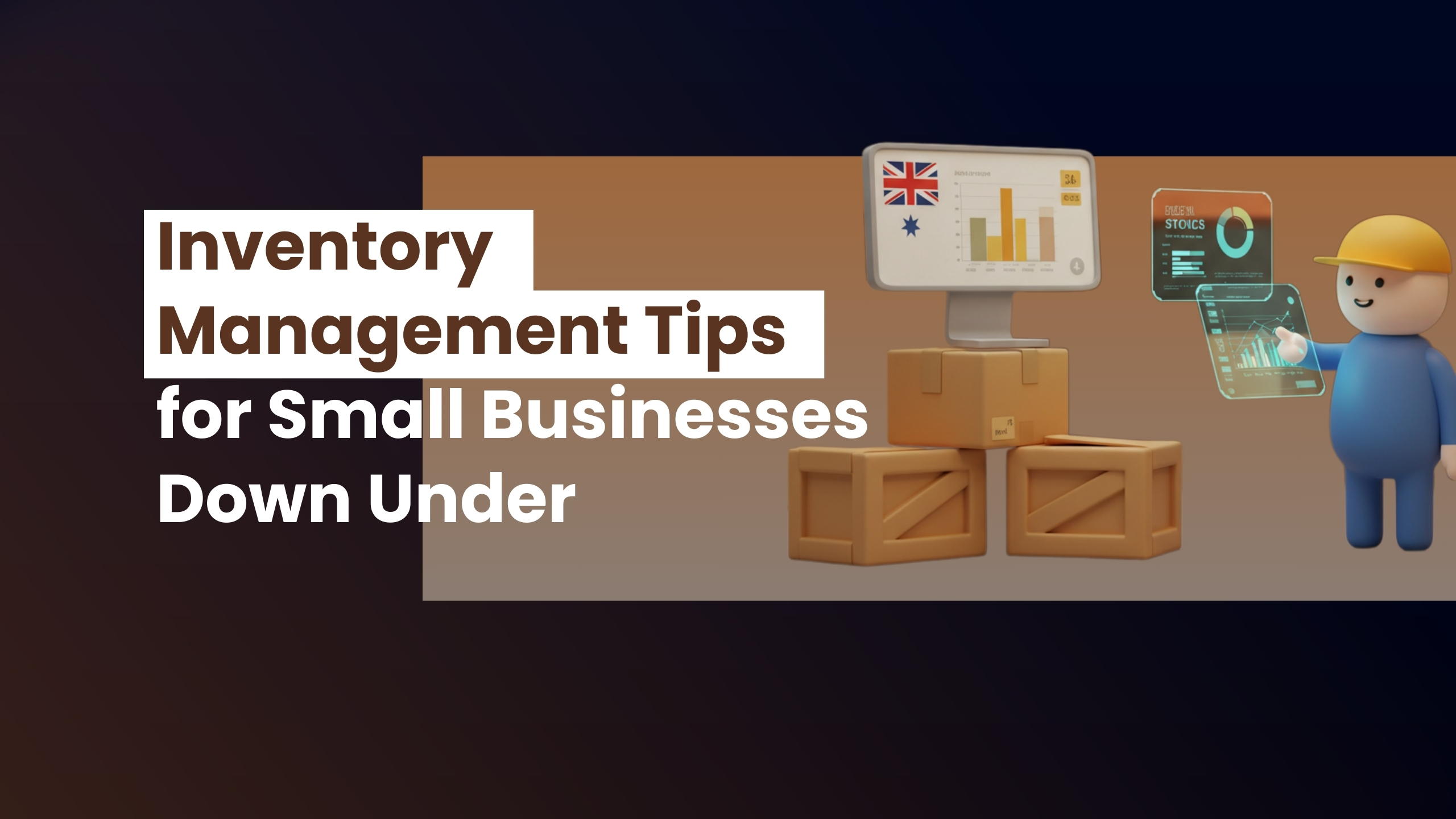Inventory Management Tips for Small Businesses Down Under
Effective inventory management is crucial for the success of any small business, especially in Australia’s dynamic market. Proper stock control minimizes waste, maximizes profitability, and helps you adapt quickly to market changes. In this guide, we provide actionable tips—backed by verified local insights, interactive tools, and real success stories—to help Aussie SMEs streamline their inventory processes.
- Keep Accurate and Up-to-Date Records
Accurate record keeping is the foundation of effective inventory management. Use reliable cloud‑based accounting software like Xero or MYOB to track stock levels, sales, and purchase orders. Regular audits (monthly physical counts) help catch discrepancies early and prevent stockouts or overstocking.
Expert Insight:
According to CPA Australia, over 75% of SMEs using reliable accounting software report significant improvements in cash flow management.
Actionable Tip:
Implement a strict schedule for updating your digital inventory records and cross‑check them with physical counts.
- Implement a Just-In-Time (JIT) Approach
Adopting a JIT strategy minimizes storage costs by ordering stock only as needed. For small businesses with limited space, this can free up cash and reduce waste. Analyze historical sales data to determine optimal reorder points and adjust your ordering frequency accordingly.
Actionable Tip:
Leverage your software’s forecasting tools to predict demand and set automated reorder triggers.
- Leverage Technology and Automation
Modern inventory management systems offer real‑time tracking, automated reordering, and data analytics. Cloud‑based tools can integrate with your point-of-sale systems, providing a comprehensive view of your inventory.
Technology Integration Tip:
Integrate accounting software like Xero or MYOB with third‑party apps that offer barcode scanning and mobile alerts to streamline operations.
- Optimize Stock Levels
Striking the right balance between overstocking and understocking is key. Use demand forecasting techniques to accurately gauge future sales and adjust your inventory accordingly. This not only prevents capital from being tied up in excess stock but also minimizes the risk of lost sales.
Actionable Tip:
Regularly review your sales trends and seasonal patterns to fine-tune your stock levels.
- Improve Supplier Relationships
Strong supplier relationships can lead to better pricing, more flexible terms, and faster delivery. Regular communication and negotiating bulk purchase discounts or favorable return policies are critical.
Actionable Tip:
Establish clear service level agreements (SLAs) with suppliers to ensure timely restocking and consistent quality.
- Monitor Key Performance Metrics
Regularly tracking KPIs—such as inventory turnover, holding costs, and stock‑out rates—is essential. These metrics provide insights into your operational efficiency and help identify areas for improvement.
Actionable Tip:
Review your inventory metrics quarterly and adjust your processes to optimize performance.
- Prepare for Market Fluctuations
Australia’s market can be unpredictable. Use scenario planning to forecast how fluctuations in demand might impact your inventory, allowing you to adjust stock levels ahead of time.
Actionable Tip:
Develop contingency plans for both demand spikes and supply disruptions to keep your business agile.
- Learn from Real Australian Success Stories
Australian SMEs that have mastered inventory management can serve as a powerful source of inspiration. For example, a local retail startup improved its stock turnover by 20% after integrating cloud‑based inventory software and automating reorder processes.
“By embracing technology and streamlining our inventory processes, we’ve reduced waste and boosted our cash flow significantly.” – Verified insight from StartupAus.
Actionable Tip:
Connect with local business networks or startup accelerators to learn from the experiences of other Aussie SMEs.
- Explore Video Tutorials and Interactive Workshops
For hands‑on guidance, consider watching video tutorials or joining interactive workshops on inventory management best practices. Many Australian small business support organizations, like business.gov.au, offer free webinars that can help you get started.
- Additional Resources and Downloadable Tools
To further support your inventory management efforts, explore these valuable resources:
a. Interactive Inventory Dashboard Templates: Customize these templates to monitor your stock in real‑time.
b. Downloadable Inventory Management Checklist: Ensure you’re covering all key areas with our free checklist.
c. Local Government Guides: Access business.gov.au for up‑to‑date insights and regulatory information relevant to Australian SMEs.
Key Takeaways
- Accurate Records: Maintain precise, up-to-date inventory records using trusted software.
- Lean Inventory: Adopt a Just-In-Time strategy to reduce storage costs and free up cash.
- Embrace Technology: Integrate modern automation tools for real‑time tracking and forecasting.
- Supplier Partnerships: Build strong relationships to secure better terms and reliability.
- Monitor KPIs: Regularly review key performance metrics to drive continuous improvement.
- Prepare for Fluctuations: Use scenario planning to stay agile in a dynamic market.
- Learn and Adapt: Draw inspiration from real-world success stories and professional workshops.
Conclusion
Effective inventory management is vital for Aussie SMEs aiming to thrive in today’s competitive market. By leveraging proven software, accessing government and professional resources, and learning from local success stories, you can streamline operations, reduce waste, and boost profitability. Download our free checklist, view our interactive resources, and watch expert webinars to further refine your strategy.
Embrace these verified practices to build a robust inventory management system that supports sustainable growth for your business Down Under.
FAQs
- Why is accurate inventory management crucial for small businesses?
It ensures you can meet customer demand, optimize cash flow, and reduce waste. - How can I balance inventory levels effectively?
Use demand forecasting and regular sales trend analysis to adjust reorder points and prevent overstocking or stockouts. - What technology tools are recommended for inventory management?
Cloud‑based accounting software like Xero and MYOB, integrated with barcode scanning and mobile alert systems, are highly effective. - How do I handle supplier delays?
Build strong supplier relationships and negotiate clear SLAs to ensure timely restocking. - Where can I access additional resources?
Download our free inventory management checklist, check interactive infographics, and attend webinars offered by business.gov.au and local startup networks.

